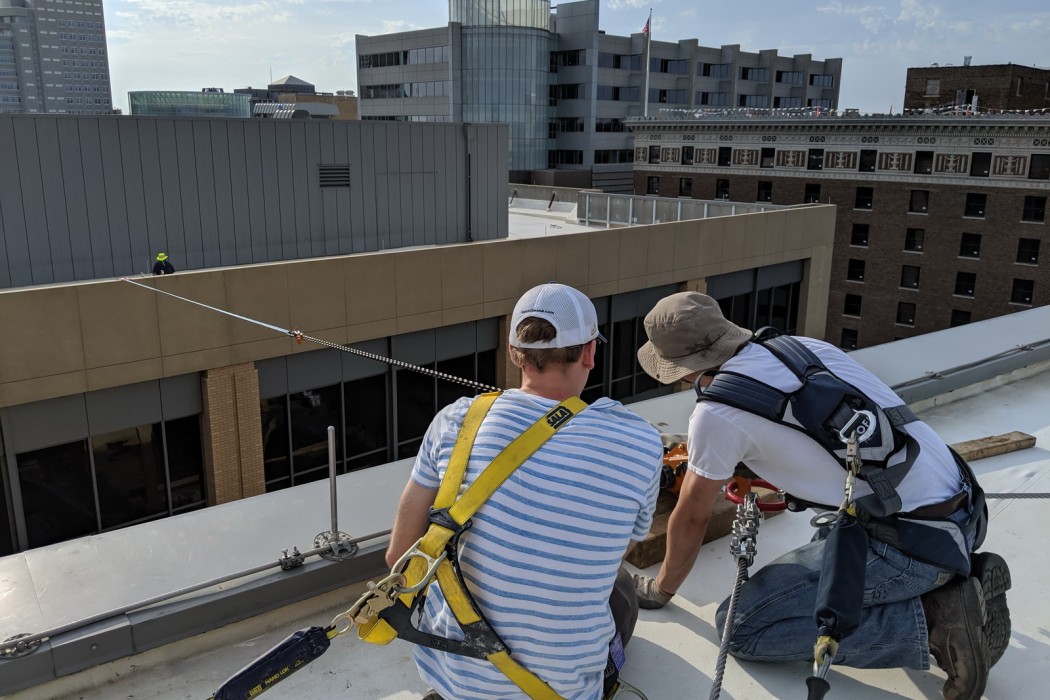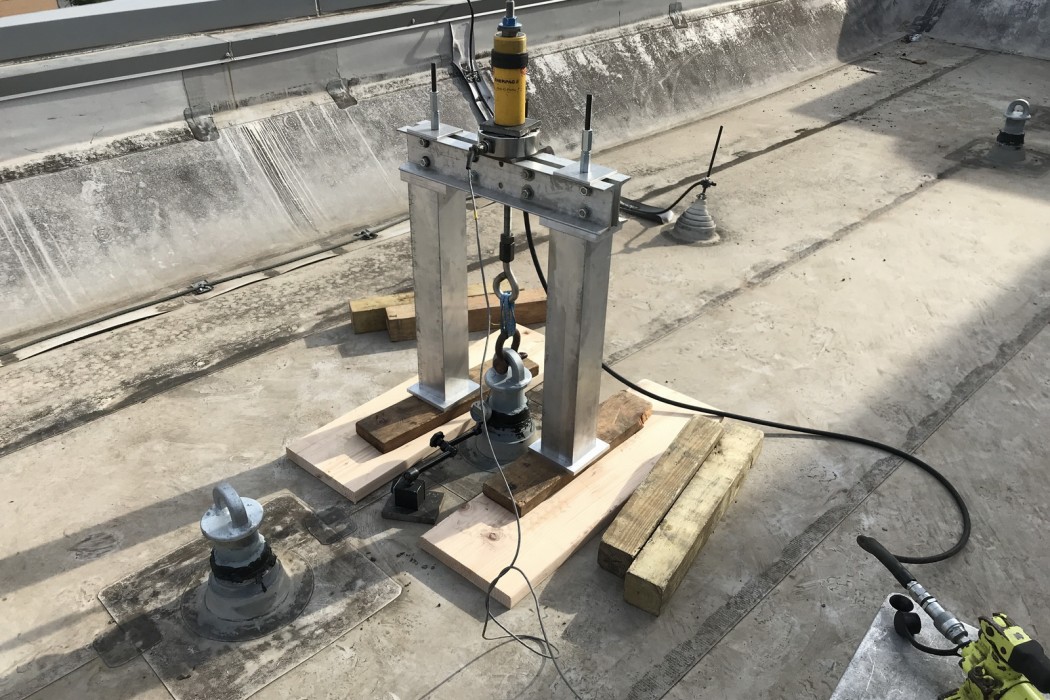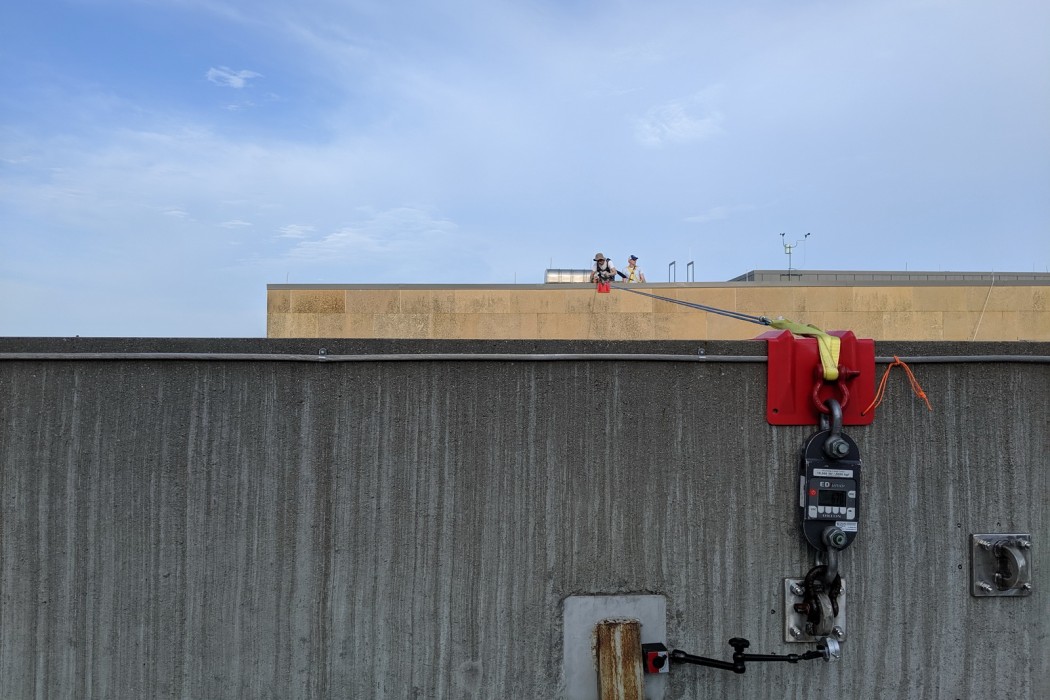WJE PROJECTS
Nationwide Roof Anchorages

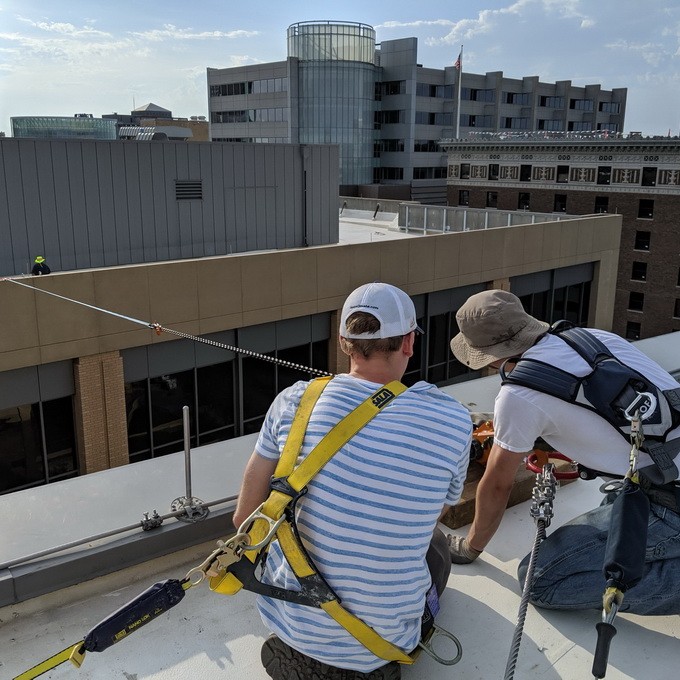
CLIENT |
Nationwide Insurance |
LOCATION |
Des Moines, IA |
Facade Access Consulting
WJE is providing fall protection-related engineering services for Nationwide Insurance facilities across the country. Their building in Des Moines, which was completed in 2007, had a system of eye bolts that were being used for rope descent systems (RDS) anchorages and were reportedly OSHA-compliant prior to the change in 2016. The eye bolts could not support the 5,000-pound load without significant deformation and possible failure. WJE was asked to design, load test, and certify the new anchorages prior to use.
BACKGROUND
The Nationwide Insurance facility in Des Moines, Iowa, is a six-story steel-framed structure that was constructed in 2007. Facade access at the facility is achieved through use of a combination of rope descent systems (RDS) and suspended work platform that utilizes building-supplied portable aluminum davits with steel davit bases that are permanently mounted to the building structure.
In 2016, OSHA updated many of its regulations for facade access and fall protection. One of the most significant changes affecting maintenance operations is that anchorages used for rope descent systems (RDS) must be identified, tested, and certified that they are capable of supporting 5,000 pounds in any direction.
SOLUTION
WJE designed a new OSHA-compliant permanent roof anchor system to support facade maintenance activities using RDS. In general, access by RDS from a building roof requires two anchorages for each drop: one anchorage for the boatswain’s chair primary support line (i.e., working line) and one anchorage for the personal fall arrest lifeline (i.e., backup line).
Eight different types of anchorages, totaling 279 individual anchor points, were installed on the roof of the building. The anchorages were designed and laid out not only to provide for efficient RDS use but also to serve the suspended work platform system and accommodate accurate and efficient future load testing. Load testing of each anchorage was performed by WJE to certify that they met the minimum required load capacity, as required by OSHA.
RELATED INFORMATION
-
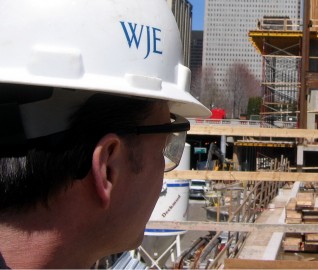 Our design professionals assist in making the overall project design achievable, maintainable,... MORE >Services | Design-Build
Our design professionals assist in making the overall project design achievable, maintainable,... MORE >Services | Design-Build -
 We collaborate with all project stakeholders throughout the design process to ensure the proper... MORE >Services | Systems and Components
We collaborate with all project stakeholders throughout the design process to ensure the proper... MORE >Services | Systems and Components -
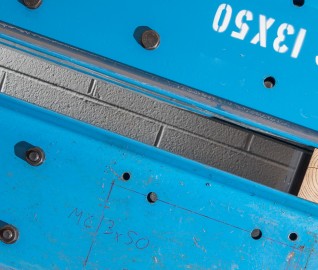 Our engineers routinely test materials and systems to failure under controlled conditions MORE >Services | Structural Load and Fatigue Testing
Our engineers routinely test materials and systems to failure under controlled conditions MORE >Services | Structural Load and Fatigue Testing -
 Learn about our Minneapolis office MORE >Offices | Minneapolis
Learn about our Minneapolis office MORE >Offices | Minneapolis



































